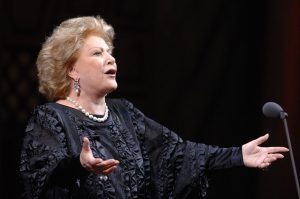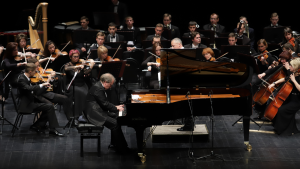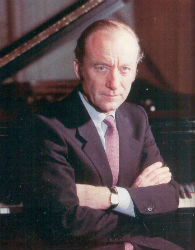How to listen to Stravinsky
 In 2017, the world music community celebrates 135 years since the birth of Russian composer Igor Stravinsky. He became one of the greatest musicians of the twentieth century and one of the most prominent figures of world contemporary art. In honor of Stravinsky, the square in the center of Paris is named, decorated with many avant-garde sculptures. On how to listen to Stravinsky, to understand his original style, tell “Kultura.RF”.
In 2017, the world music community celebrates 135 years since the birth of Russian composer Igor Stravinsky. He became one of the greatest musicians of the twentieth century and one of the most prominent figures of world contemporary art. In honor of Stravinsky, the square in the center of Paris is named, decorated with many avant-garde sculptures. On how to listen to Stravinsky, to understand his original style, tell “Kultura.RF”.
Citizen of the world
Being a Russian by birth, Stravinsky became a truly “citizen of the world.” Having got through the Russian seasons of Sergey Dyagilev into the thick of the artistic life of Europe, he received a unique chance to demonstrate the composer’s talent to the public of broad views. World fame, which Stravinsky gained after the grand success of his first three ballets in Paris – Firebird (1910), Petrushka (1911) and Sacred Spring (1913), established him as a respected avant-garde artist and allowed him to create absolutely free. Such a flight Stravinsky could hardly have allowed himself in his homeland, where, before the 1917 revolution, he would have to reckon with the opinion of conservatory conservators, and after the revolution, he would correspond to the class ideology of the new masters of life. The works – and even the very mention of – Stravinsky were banned in the USSR right up to the thaw of the 1960s, and for the composer’s music score, for example, they could have excluded a student from the Komsomol and even from the conservatory.
Stravinsky style
During the twentieth century, Stravinsky managed to try himself in almost all musical styles. In official musicology, it is customary to divide Stravinsky’s creative biography into several style stages. Usually called the three main periods of his life and work – “Russian”, “neoclassical” and “serial”. But in fact, this separation is rather arbitrary. Virtually every major work of Stravinsky is written in its own unique style, which is characteristic of all the music of the past century as a whole. And at the same time, all his compositions are united by a single creative approach, which can be traced throughout the composer’s entire life.
Igor Stravinsky. Ballet “Parsley” (Russian amusing scenes in four scenes). Revision 1947. Performed by the Moscow Conservatory Symphony Orchestra conducted by Vladimir Yurovsky
In most works, Stravinsky refers to a stylistic source. This may be Russian folklore, and baroque, and early jazz, and Peter’s cant, and urban romance, and popular music, and many other styles. And whatever Stravinsky would turn to, he always acts according to the same principle: he takes the basic motifs from which most of the works of this or that style are built, and builds his own completely independent works of them ..
What listeners are used to
For the untrained listener, many of Stravinsky’s works still sound somewhat unusual – as, indeed, almost all the music of the twentieth century. One of the reasons for this is the repertoire policy of most philharmonic halls, where mainly academic music of the classical-romantic period sounds. It is based on two parameters that we have absorbed not just from birth, but almost at the genetic level: tonality (interaction and opposition of stable and unstable sounds and chords) and consonance (relative compatibility and harmonious tones sounding simultaneously). All the popular music that we hear is also based on this.
Accordingly, when the melody offered to us goes beyond these parameters, we perceive it as unusual, incomprehensible and in some respects even “spoiled”. That is, if we do not hear a clearly distinguishable major-minor combination; if chords do not pass from one to another in the usual way, according to age-old rules (which are still taught in music schools and colleges); if unstable sounds are not resolved to steady sounds (which gives us a feeling of comfort and stress relief); and if we cannot mentally put simultaneous combinations of sounds into well-known varieties of triad and seventh chords, then we immediately identify such music as alien. It seems either too “modern”, that is, yet incomprehensible, or multicultural, since Indian, Chinese, Japanese, Arabic and some other types of music are built on patterns that differ from the European tradition.
How to take Stravinsky
At the beginning of the twentieth century, dramatic changes took place in music (as in other arts). She no longer should have seemed beautiful in the usual understanding and feeling. Composers began to actively pursue new paths in art, to search for new patterns of connections between musical sounds. And Stravinsky, being in the epicenter of contemporary art, took an active part in these searches.
Igor Stravinsky. Ragtime for 11 tools. Performed by the Malaysian Philharmonic Youth Orchestra conducted by Kevin Field




